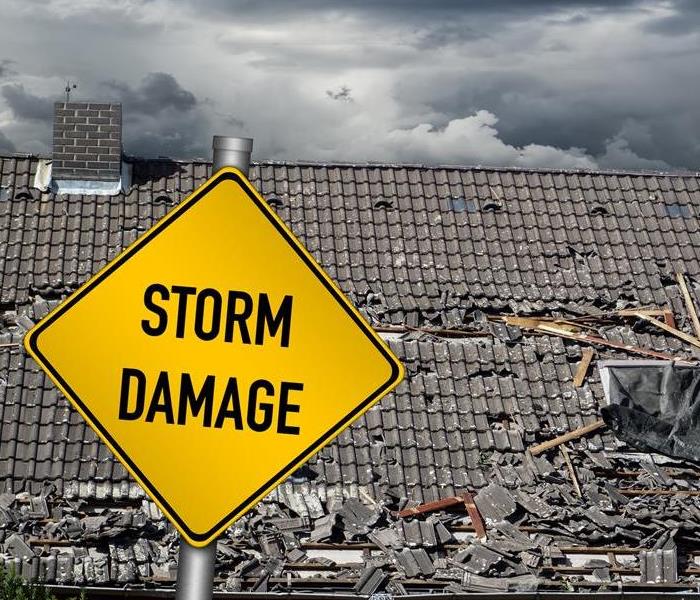How does SERVPRO Contain Hazards during Flood Damage Remediation?
10/15/2020 (Permalink)
Poughkeepsie Homeowners Need Safe Flood Damage Remediation
No one likes to think of contaminants entering their Poughkeepsie home, but unfortunately, sometimes it is unavoidable after a severe storm. Thankfully SERVPRO is on hand to take care of the problem hygienically and safely.
Flood damage in your Poughkeepsie home carries with it a risk of contamination by all kinds of nasties, including:
- Chemicals such as pesticides
- Dangerous building materials such as asbestos
- Human or animal waste or carcasses
Biohazards such as bacteria, viruses, parasites, and fungus
Keeping you and your family safe from pollutants and creating a safe working environment are our top priorities when attending a flood damage situation. We make sure the area is secure, our workers are well-equipped, and you understand what we are doing, and what will happen next.
Why is time so important when handling the contaminant risk?
We measure water by category:
- Category 1 water is clean with no contaminants, such as water from a cold faucet
- Category 2 water has some contaminants, such as dishwasher chemicals, or water from a heating system
- Category 3 water is the most hazardous and might contain pathogens, microbes, and human waste
Floodwater from rivers, the ocean, or an overflowing sewage inlet is always counted as category three, and many storm incidents cause category three flooding.
If water is left standing, the category can deteriorate. Category two water can become category three water as microbes multiply and grow. A longer time also increases the risk of mold growth. That is why We’re Faster To Any Size Disaster – our team will be with you within four hours after you call and notify us of a flood damage situation.
What safety training and equipment do our technicians have?
All SERVPRO of NW & SE Dutchess County staff receives comprehensive training. We train our people to the Institute of Inspection, Cleaning and Restoration Certification (IICRC) standards. The IICRC provides national standards for all aspects of remediation, including flood damage.
We equip our teams with all the equipment they need to work safely, including aprons, gloves, hard hats, steel-toed boots, and breathing apparatus.
We also use antimicrobial agents to help decontaminate the area and fight microbe growth.
Biohazards are not the only concern when dealing with flood damage. SERVPRO teams also:
- Ensure there is a safe electricity supply for our equipment, and neutralize any electrical hazards
- Check there is no danger from sagging ceilings or hanging drywall
- Tarp up roofs and board up doors and windows if necessary
- Set up adequate lighting in the working area and clear it of any walkway debris
When do we use containment and how does it help?
Containment helps prevent the spread of contaminants. People often associate containment with fungal cleanup, but it is also useful for preventing the spread of bacteria and viruses. Containment also limits the number of people who are exposed to contaminants and helps us manage the airflow between clean and contaminated areas.
Source containment means wrapping contaminated materials in thick plastic sheeting and disposing of them. We use source containment for very mild situations. For mild to moderate cases, we use local containment. We construct a small area from a frame and some plastic sheeting, that is big enough for one worker to clean inside the site while bagging contaminated materials and passing them out for disposal.
In more extreme cases, we use full-scale containment. We start by setting up our main containment area. Then, depending on needs, we might add:
- A decontamination area for decontaminating SERVPRO workers and equipment, and for storing contaminated materials ready for removal
- An equipment room for storing contaminated equipment and worker’s clothes
- A clean room for storing uncontaminated equipment and clothes
- A contents cleaning room for cleaning salvageable contents
We clean and decontaminate all re-usable items between uses.
How well-sealed is the containment area?
A contamination area only works if it is properly sealed. Because most contaminants are microscopic inside, we need to seal the site to prevent the escape of tiny particles. We use thick plastic sheeting to set up our containment areas and seal every seam with thick duct tape. We also cover all windows, doors, and vents, so there are no escape routes. It is essential to switch off the HVAC, so microbes do not escape via the HVAC ducts.
We can also bring in a negative air machine to create negative air pressure inside the contained area, and make it harder for contaminated air to escape. We use tubing to evacuate the contaminated air outside the building.
You can rely on us to identify and dispose of contaminated water and materials, and clean and disinfect your home to leave it safe and healthy once more.
For safe flood damage remediation, call SERVPRO of NW & SE Dutchess County at (845) 635-4550.






 24/7 Emergency Service
24/7 Emergency Service